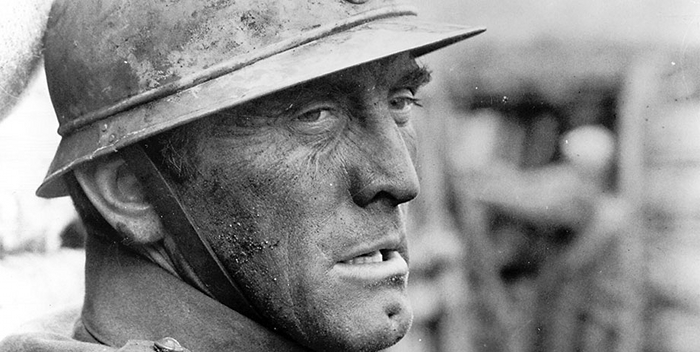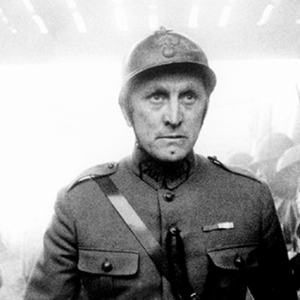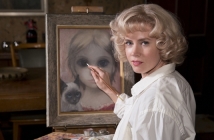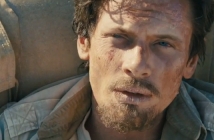
Paths of Glory (1957)
Cast: Kirk Douglas, Ralph Meeker, Adolphe Menjou
Directors: Stanley Kubrick
Country: USA
Genre: Drama | War
Editor’s Notes: The following review is part of our coverage for TIFF’s Stanley Kubrick: A Cinematic Odyssey. For more information on upcoming TIFF film series visit http://tiff.net and follow TIFF on Twitter at @TIFF_NET.
Paths of Glory is Stanley Kubrick’s first masterpiece. Some would argue that honor would go to his prior film The Killing, which is a fantastic, even great film, but to Paths of Glory, Kubrick brought the austere nature that would become his trademark for the first time. This is also the first work of Kubrick’s that has the feeling of being fully formed without any hints of a man trying to feel his way through learning on the job. He is finally, by this his fourth film, completely assured in everything he’s doing from groundbreaking tracking shots to the use of vast negative space within a frame.
Paths of Glory is Stanley Kubrick’s first masterpiece. Some would argue that honor would go to his prior film The Killing, which is a fantastic, even great film, but to Paths of Glory, Kubrick brought the austere nature that would become his trademark for the first time.
The story is that of Col. Dax (Kirk Douglas, giving one of his finest performances) and his unit who are charged with taking the Ant Hill, a small hill controlled by the Germans during World War I. When the unit fails to capture the Ant Hill, partly because it was such a difficult task and partly because a third of the unit was pinned down in the trenches and could not even get out, General Mireau (George Macready) orders that men from each company be selected and tried for cowardice. The court martial is set up more like a kangaroo court with Dax as the defense council unable to call witnesses to character or enter former commendations of valor on behalf of the accused. No evidence of any kind is allowed to be entered that could help the three men mostly because the verdict was decided upon before the trial convened, or so it would seem. The three men are condemned to death and the focus turns to the condemned men as they spend their final night in a barn that was converted into a brig.

It is interesting how Kubrick and co-writers Calder Willingham and Jim Thompson structured the film. The story is constructed out of six distinct parts, sort of a subdivision of the traditional three act structure. The first is before the attack, then the attack itself, then just after the attack, the court martial, the last night into the shooting and a brief but memorable conclusion. Each section has its own unique tone that dovetails into the next section flawlessly while maintaining its individuality. There is an overarching theme of the senselessness of war, matched only by the other great WWI anti-war film All Quiet on the Western Front but there are smaller points that Kubrick is making with each section. The impetus of the attack is Gen. Mireau’s pride and greed in wanting his next star, promised to him by his superior Gen. Broulard (Adolph Menjou), who seems to stand something big to gain if the operation is a success as well given the cajoling he does to get Mireau to agree to it.
The powerhouse performance here is Douglas. He was great in nearly everything he did, but here he gets to shine a bit more because he was so passionate about the project.
The powerhouse performance here is Douglas. He was great in nearly everything he did, but here he gets to shine a bit more because he was so passionate about the project. He not only stared in it, but he also produced it under his Bryna Productions banner despite knowing the picture wouldn’t make any money. His collaboration with Kubrick wasn’t always pleasant (few were) but the results were stunning. Douglas was always one to pour his emotions into a roll, but here he is often very restrained, more so than in any other picture he ever made. Only at the end does he give one of his famous tirades and it makes sense because he’s calm and reasoned through the entire film while more and more outrageous things are done to and around him. He bares all of it with a quiet dignity until he can take no more and he unleashes his anger and exasperation on Broulard.
The other marvel of the film is Kubrick himself. His careful framing and amazingly innovative camera work make this film completely and utterly unique in 50’s American cinema. Kubrick is making his stamp in a time when the two great technological directors of the day, Alfred Hitchcock and Orson Welles, are being marginalized or pushed out entirely (it would be three years until Hitchcock would produce one of his last masterpieces, Psycho and a year before the studio-butchered version of Touch of Evil would come out, which was Welles final Hollywood studio film before he left for Europe to continuously string together funding for films that either took far too long to finish or never got off the ground, where he would only get two more noteworthy films made: The Trial and F for Fake), so the field was ripe for Kubrick’s taking. By creating a first-of-its-kind tracking shot through the trenches, one angle following the action and the other preceding it, Kubrick took us into the trenches and into the action of a film in a way that had never been done before. We were there, winding our way through the labyrinthine tunnel system of the WWI trenches, watching a smug General ask if his men were ready to kill more Germans and a grim-faced Colonel stride through on the eve of battle, knowing his task the next day would likely be impossible yet leading the charge nevertheless.
Kubrick also understood how to use the large spaces that the French palace that served as General Mireau’s headquarters afforded. The large rooms where the meetings between Generals and where the court martial is held offer juxtapositions of visual scale to the smallness of the men inhabiting them. During the court martial, the people are walking some ten to fifteen paces to get to where they’re going and they’re only occupying about a third of the space of the room. Kubrick also uses the sound from the room, complete with echo to emphasize the fact that Dax’s pleas are bouncing off the walls but falling on deaf ears.
Paths of Glory achieves many things in its brief running time. It illustrates the pointlessness of war, savages the European Officer Class and shows, in the final sequence wherein a room full of rowdy French soldiers are calmed and moved to tears by the a Capella singing of a young German captive (Susanne Christian, whom Kubrick later married), illustrates how everyone is human despite political differences and true beauty can and is appreciated by all humankind. That final sequence is why Paths of Glory is one of, if not the greatest, anti-war films of all time because it brings everyone down to the same level. It doesn’t try to say that each side loses good people or that wars are the posturing of nations at the expense of its youth, it just says we’re all the same deep down and that should be respected above all.
That final sequence is why Paths of Glory is one of, if not the greatest, anti-war films of all time because it brings everyone down to the same level. It doesn’t try to say that each side loses good people or that wars are the posturing of nations at the expense of its youth, it just says we’re all the same deep down and that should be respected above all.




